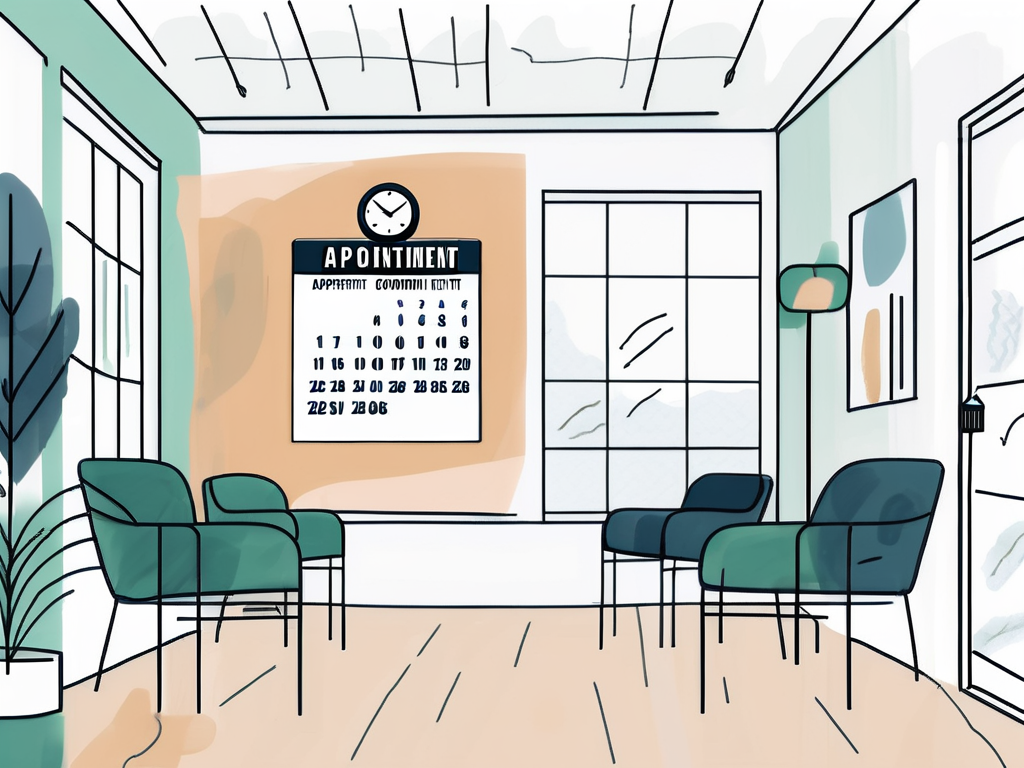In the world of healthcare, patient no shows and appointment cancellations can have a significant impact on both providers and patients. Not only do these instances disrupt the flow of a provider’s day, but they can also result in financial losses and compromised patient care. In this article, we will explore the consequences of patient no shows and cancellations, identify their root causes, and discuss effective strategies to minimize them.
Understanding the Impact of No Shows and Cancellations
First and foremost, let’s delve into the various ways in which patient no shows and cancellations can affect healthcare providers. One of the most obvious consequences is the financial toll they take. When patients fail to show up for appointments or cancel at the last minute, providers miss out on potential revenue. This can be particularly challenging for smaller practices or clinics operating on tight budgets.
However, the impact of no shows and cancellations extends beyond financial ramifications. These no-shows disrupt the scheduling of other patients, leading to longer wait times and inefficiencies in delivering care. Additionally, when patients miss or cancel appointments, their treatment plans and healthcare outcomes may suffer. Timely interventions and continuity of care become more challenging to achieve, potentially jeopardizing patient well-being.
Moreover, the ripple effects of no shows and cancellations can also strain the emotional and mental well-being of healthcare providers. Constantly dealing with last-minute cancellations and empty appointment slots can be frustrating and demoralizing for medical professionals who are dedicated to providing quality care. It can lead to feelings of inefficacy and burnout, impacting their overall job satisfaction and morale.
Furthermore, the administrative burden caused by managing and rescheduling appointments due to no shows can divert valuable time and resources away from other essential tasks. This can hinder the overall efficiency of the healthcare facility and create bottlenecks in patient care delivery. Implementing strategies to reduce no shows and cancellations, such as reminder systems and overbooking policies, becomes crucial to mitigate these challenges and ensure optimal patient care.
Identifying the Root Causes of No Shows and Cancellations
By understanding the underlying factors contributing to no shows and cancellations, healthcare providers can develop targeted strategies to mitigate them. Patient-related factors play a significant role in missed appointments. Life events, personal emergencies, or forgetfulness can all contribute to patients failing to show up. On the other hand, system-related factors, such as complex appointment processes or lack of communication, can also lead to cancellations.

Delving deeper into patient-related factors, it’s essential to recognize that various socioeconomic and cultural aspects can impact a patient’s ability to attend appointments. Factors like transportation issues, financial constraints, or language barriers can pose significant challenges. Healthcare providers can address these barriers by offering transportation assistance, financial aid programs, or language interpretation services to ensure all patients have equal access to care.
Patient-Related Factors
Life can be unpredictable, and patients may face unexpected challenges that prevent them from attending appointments. Communicating openly with patients and understanding their unique circumstances can help providers anticipate potential barriers and work collaboratively to overcome them. Implementing reminder systems through phone calls, text messages, or email notifications can serve as valuable tools in reducing no shows.
System-related factors also warrant a closer examination to improve appointment attendance rates. Enhancing the patient experience through technology solutions, such as patient portals for appointment management or virtual waiting rooms for seamless check-ins, can enhance overall satisfaction and reduce the likelihood of cancellations. Additionally, fostering a patient-centered approach by actively seeking feedback on appointment processes can help identify areas for improvement and increase patient engagement.
System-Related Factors
Inefficient appointment booking processes and lack of clear communication can contribute to cancellations. Streamlining the booking process by offering online appointment scheduling options can make it more convenient for patients to secure and remember their appointments. Clear instructions and information about logistics and requirements can also help patients plan accordingly, reducing the likelihood of cancellations.
Strategies to Minimize Patient No Shows
Now that we have identified the root causes, let’s explore some effective strategies to minimize patient no shows. Implementing appointment reminders is an essential step in reducing no shows. Automated reminders via email, text, or phone calls can significantly increase patient adherence. These reminders should not only include the date and time of the appointment but also any preparation instructions or requirements.
Enhancing patient-provider communication is another crucial strategy. Building relationships with patients through active listening, empathy, and education can promote a sense of accountability and responsibility. Providers should take the time to engage with patients, address their concerns, and answer any questions they may have, fostering a partnership in their healthcare journey.
Offering flexible scheduling options can also help minimize no shows. Patients’ lives are diverse and often unpredictable. By providing a variety of appointment slots, including early morning, evening, or weekend appointments, healthcare providers can increase the chances of patients finding a time that suits their needs, thus reducing the risk of cancellations due to scheduling conflicts.
Moreover, creating a welcoming and comfortable environment in the waiting area can positively impact patient attendance. A calming atmosphere with comfortable seating, soothing music, and informative reading materials can help reduce patient anxiety and make the waiting time more pleasant. Additionally, offering amenities such as water, tea, or coffee can further enhance the overall patient experience, making them feel valued and cared for.
Another effective strategy is to provide educational resources to patients regarding the importance of attending appointments. By explaining the impact of missed appointments on their health outcomes and the healthcare system as a whole, patients may develop a better understanding of the significance of keeping scheduled visits. This educational approach can empower patients to take an active role in managing their health and prioritize their appointments accordingly.
Techniques to Reduce Appointment Cancellations
In addition to addressing no shows, healthcare providers must also focus on minimizing appointment cancellations. Streamlining the appointment booking process is key. By simplifying the steps required to schedule an appointment, providers can reduce patients’ anxiety and minimize the likelihood of cancellations. Online booking platforms that offer user-friendly interfaces and clear instructions can make the process more efficient and less prone to errors.

Improving patient education and engagement is vital in reducing cancellations. By providing detailed information about the purpose and importance of their appointments, patients are more likely to understand the value of attending. Educating patients about the potential consequences of missed or canceled appointments and the benefits of adhering to their healthcare plans can motivate them to prioritize and commit to their scheduled visits.
Addressing transportation and accessibility issues can also play a significant role in reducing cancellations. Lack of transportation, mobility challenges, or long travel distances can all contribute to patients canceling appointments. Exploring transportation alternatives, arranging for home visits, or providing telehealth options can all help overcome these barriers, ensuring patients can access the care they need without the stress of logistical challenges.
Furthermore, implementing reminder systems can be an effective strategy in reducing appointment cancellations. Sending out automated reminders via text, email, or phone calls can help keep patients informed and serve as a gentle nudge to honor their scheduled appointments. These reminders can include important details such as appointment time, location, and any preparation instructions, helping patients feel more organized and prepared for their visit.
Another approach to reducing cancellations is by offering flexible scheduling options to accommodate patients’ diverse needs and preferences. Providing evening or weekend appointments, telemedicine consultations, or group sessions can cater to individuals with busy schedules, limited mobility, or those who prefer alternative healthcare delivery methods. By offering a range of choices, healthcare providers can increase appointment adherence and satisfaction among their patient population.
Evaluating the Effectiveness of Your Strategies
Lastly, evaluating the impact and effectiveness of implemented strategies is essential for continuous improvement. Tracking no show and cancellation rates can provide valuable insights into the effectiveness of your efforts. By monitoring these metrics, providers can identify trends, patterns, or specific areas that may require further attention. Gathering patient feedback, whether through surveys or direct conversations, can also provide valuable insights into the patient experience and identify areas where improvements can be made.

Ultimately, reducing patient no shows and appointment cancellations requires a multifaceted approach. By understanding the consequences, identifying the root causes, and implementing targeted strategies, healthcare providers can foster a culture of patient engagement and commitment. With proactive measures in place, providers can minimize disruptions, optimize care delivery, and cultivate positive patient experiences.
Ready to take your clinic’s appointment adherence to the next level? Join the Wellth Daily community and receive our free newsletter, designed specifically for CAM practitioners and clinic owners like you. Each weekday, you’ll get a quick, 2-minute read packed with proven strategies to grow your practice and reduce patient no-shows. Plus, you’ll gain access to exclusive, beautifully designed clinic resources to enhance your patient engagement. Don’t miss out on the opportunity to learn from a vibrant network of health professionals committed to success. Subscribe FREE today and start transforming your practice with Wellth Daily!
